
As someone deeply committed to creating tools that help people navigate the complexities of emotional regulation and nervous system awareness, I take every piece of feedback seriously – yes, even the tough ones.
Earlier this year, a one-star review of the What’s My State? Card Deck by Phillip Bradbury caught my attention. In Fact I went into “freeze” response as a result.
The reviewer raised valid points about accessibility, usability, and the need for supporting materials, which I believe opens the door to an important conversation.
Let’s break it down and let me share what’s behind these cards and how they’re meant to work.
The What’s My State? cards aren’t just about Polyvagal Theory – they’re rooted in Polyvagal principles, which go beyond theory to provide a practical framework for recognizing and shifting states. Polyvagal Theory, pioneered by Dr. Stephen Porges, examines the interaction of the autonomic nervous system with emotions, relationships, and behaviors. The deck is designed to help users explore their autonomic states – whether they’re in fight/flight (sympathetic activation), freeze (dorsal vagal shutdown), or a place of safety and connection (ventral vagal regulation).
But here’s the thing: these cards aren’t meant to be a one-size-fits-all solution. They’re a tool, and like any tool, their effectiveness depends on understanding how to use them. This is why the feedback on the lack of guidance resonates with me – it highlights a gap I need to address.
The reviewer raised three key concerns:
No Instructions in the Box
It’s true. The deck does not come with an instruction booklet, and that was an intentional choice—perhaps one that deserves revisiting. The idea was to minimize paper waste (as someone who’s dyslexic, I also find instructions daunting). Instead, we included a QR code linking to a page with tips and ideas for using the cards. However, the reviewer noted that the link was blocked by Safari’s security system. This is a technical oversight on my part and something I’ll work to fix immediately.
Small Font Size
Accessibility matters. The text on the cards is indeed compact, and this feedback will guide future design iterations. Everyone should be able to use these cards comfortably, without straining to read.
Only for Those Familiar with Polyvagal Theory
This point hits home. The cards are based on Polyvagal principles, not just the theory itself. They aim to help users practice state awareness, self-regulation, and co-regulation, whether or not they’re deeply familiar with the academic side of Polyvagal Theory. However, I see now that additional context and examples might be helpful to bridge the gap for users who are newer to these ideas.
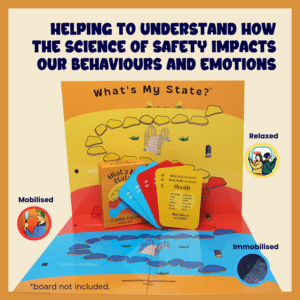
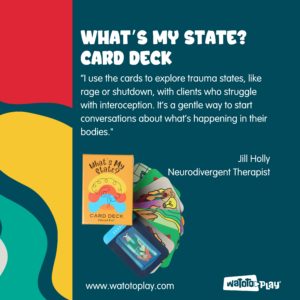
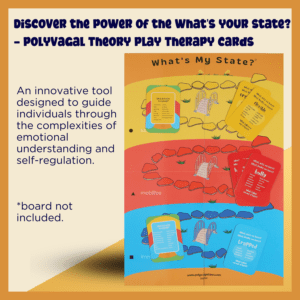
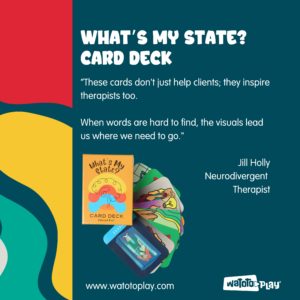
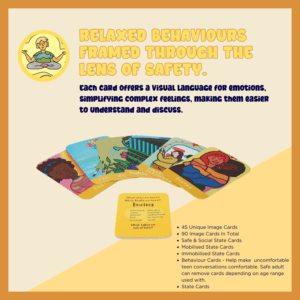
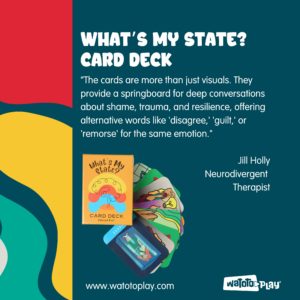
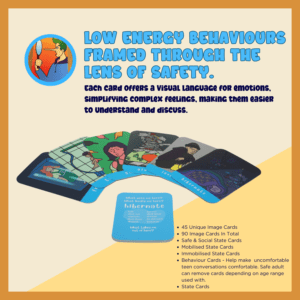
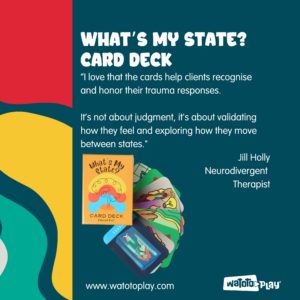
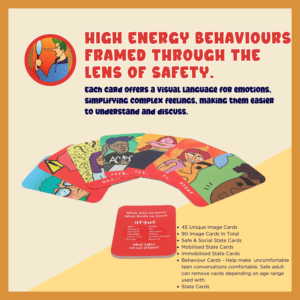
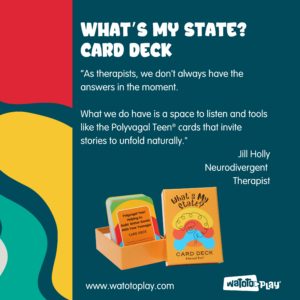
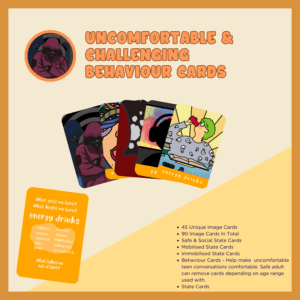
The What’s My State? cards were designed with flexibility in mind. They’re not a prescriptive guide; instead, they’re meant to encourage self-reflection and curiosity. By asking questions like, “What state am I in right now?” and “What might help me shift into a more regulated state?” the cards foster personal insight and emotional literacy.
However, the lack of a clear starting point has made it harder for some users to engage. This review reminds me that while I value adaptability and user-led exploration, a little more structure and guidance wouldn’t hurt – especially for those who are new to Polyvagal principles.
The What’s My State? cards were intentionally designed with flexibility at their core. They aren’t a step-by-step guide but rather an invitation to engage in self-reflection and spark curiosity about your internal world. Each card features different words and prompts, encouraging users to explore questions like, “What state am I in right now?” and “What might help me shift into a more regulated state?” These cards aim to build emotional literacy, helping individuals recognize patterns in their nervous system and empowering them to find strategies for self-regulation.
However, the feedback about the lack of a clear starting point highlights an important consideration: while flexibility and exploration are essential, providing a little more structure can help users—especially those new to Polyvagal principles—feel more confident and engaged. This insight has inspired me to consider how guidance and adaptability can coexist to create a richer experience for all users.
Curiosity is a cornerstone of growth, connection, and understanding, both within ourselves and with others. When we approach our nervous system and emotions with curiosity rather than judgment, we create space for self-compassion and learning. This openness allows us to see regulation as a journey, not a fixed destination.
That’s why I encourage families, couples, or groups to use the cards as a shared activity. By exploring the cards together, families can discover new ways to communicate, co-regulate, and deepen their understanding of one another. For example, a family might sit together, draw cards, and discuss how each person experiences certain states or what strategies help them feel more connected. This practice not only fosters individual insight but also strengthens family bonds, encouraging empathy and teamwork.
The beauty of the What’s My State? cards is that they’re not limited to one prescribed use. Over time, I’ve seen families, educators, and therapists come up with creative ways to integrate the cards into their lives, from bedtime routines to group discussions during dinner. By engaging with the cards together, families build a shared language for talking about emotions, states, and needs. This collaborative exploration creates opportunities for deeper connection, as each person learns more about themselves and the people they care about.
By creating these cards, my goal has always been to foster connection – connection to oneself and to others. This review reminds me that while I value adaptability, providing a gentle guide or starting point could empower more people to embrace the possibilities these cards offer.
In the end, the magic of the What’s My State? cards lies in their ability to grow with you. Whether you’re a seasoned expert in Polyvagal principles or just beginning your journey, the cards invite curiosity, discovery, and connection – both within and beyond the deck.
This review has spurred me into action. Here’s how I plan to improve the experience for future users:
Enhancing Accessibility
I’ll increase the font size in the next printing of the cards and ensure that the QR code links function smoothly across all browsers. For those who can’t access the digital resources, I’ll consider including a concise, printed quick-start guide.
Creating More Accessible Resources
I’ll expand the online materials to include short video tutorials and examples, making it easier for users to see the cards in action. These videos will explain how to integrate the cards into daily practices for self-regulation, relationship-building, or even therapy sessions.
Acknowledging Feedback
The reviewer’s feedback has been invaluable. It’s a reminder that no tool is perfect and that improvement is an ongoing process. Every critique is an opportunity to grow.
To everyone who has supported the What’s My State? card deck – whether through a glowing review, constructive criticism, or thoughtful questions – I’m grateful. These cards were created to help people connect more deeply with themselves and others, and I remain committed to making them as accessible and impactful as possible.
Polyvagal principles are about more than understanding your nervous system – they’re about embodying safety, connection, and regulation in your everyday life. My hope is that these cards continue to be a resource for anyone on that journey, even as I refine and improve them for future editions.
If you’ve used the What’s My State? cards, I’d love to hear from you. What’s working? What’s not? Let’s keep the conversation going – and keep learning together.

Driven to improve the emotional wellbeing of young people, adults, and parents, Yasmin Shaheen-Zaffar is the founder and creator of Polyvagal Teen®. She also developed The R.U.D Process® – a practical, step-by-step approach that helps teens and adults recognise and manage stress and anxiety by becoming Polyvagal Aware.
In addition, Yasmin leads several social-impact initiatives that promote steady, consent-based communication and co-regulation:
Glad We Talked® programmes
Neurosloth® Academy
Talky Talk Cards
Scribbledeedo®
World Stop Shouting Day – a campaign to reduce conflict and aggression in everyday interactions
Alongside this work, Yasmin runs a small private counselling practice in North Yorkshire and online, specialising in emotional regulation and working with neurodivergent, multi-faith, and mixed-heritage clients.